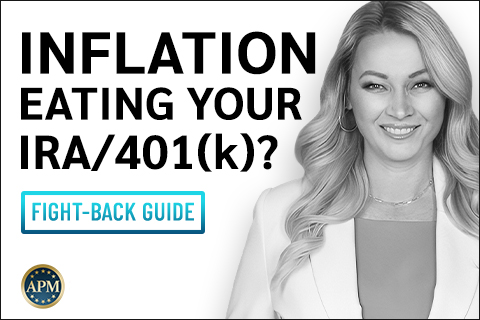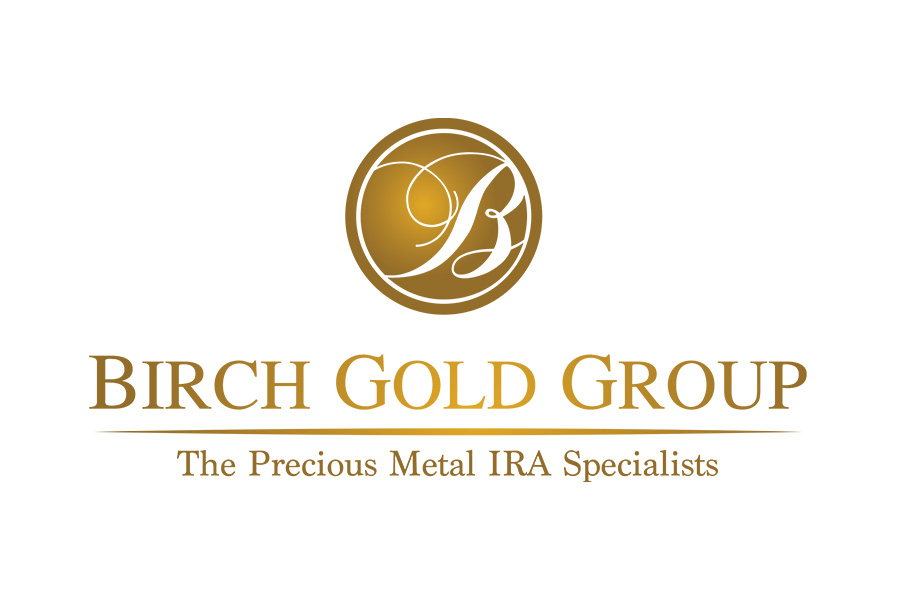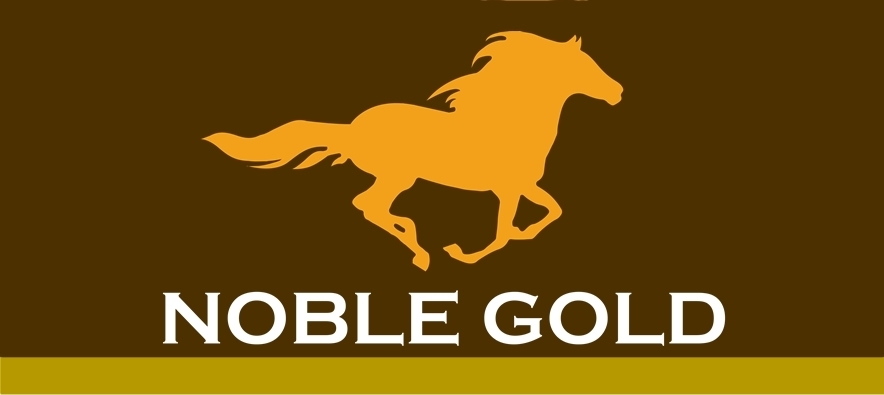Affiliate Disclosure
The owners of this website may be paid to recommend the following companies: Goldco, Augusta Precious Metals, Noble Gold Investments, and Birch Gold Group. The content on this website, including any positive reviews of the mentioned companies, and other reviews, may not be neutral or independent. We do believe in all the companies we recommend as being the most trustworthy in the business.
Retirement planning is a vital aspect of securing a financially stable future, and a Gold IRA rollover can be a strategic move in diversifying your retirement portfolio. In this gold IRA rollover guide, we seek to help you understand the potential benefits of including physical gold and other precious metals in your portfolio. Investors can better weather the storms of market volatility and economic uncertainties.
A Gold IRA rollover allows you to transfer funds from an existing retirement account into a self-directed IRA that permits investment in tangible assets like gold. The process empowers you to take control of your retirement savings and mitigate risks associated with traditional investments.
Gold IRA Rollover Guide

What is a Gold IRA Rollover?
A Gold IRA rollover involves transferring funds from an existing retirement account, such as a traditional IRA or 401(k), into a self-directed IRA that allows for investment in physical gold and other precious metals. Unlike traditional IRAs, which typically limit investment options to stocks, bonds, and mutual funds, a self-directed IRA provides more flexibility and control over the assets held within the account.
The Benefits of Gold IRA Rollover
- Diversification and Risk Mitigation: One of the primary advantages of a Gold IRA rollover is the opportunity to diversify your investment portfolio. Diversification involves spreading your investments across different asset classes to reduce the impact of market volatility on your overall wealth. Including physical gold in your retirement portfolio can provide a level of diversification that traditional assets may not offer.Precious metals, including gold, have historically exhibited a low correlation with other asset classes like stocks and bonds. This means that gold’s price movements are not directly influenced by the performance of traditional financial markets. During periods of economic downturn or market turmoil, the value of gold can remain relatively stable, providing a buffer against potential losses in other investments.
- Hedge Against Inflation: Inflation is the gradual increase in the prices of goods and services over time, leading to a decrease in the purchasing power of fiat currencies. As inflation erodes the value of paper money, the price of physical assets like gold tends to rise. Gold has long been considered a reliable hedge against inflation due to its intrinsic value and limited supply.When the purchasing power of fiat currencies declines, the value of gold tends to increase, helping investors preserve their wealth. By including gold in your retirement portfolio, you can potentially mitigate the adverse effects of inflation on your overall financial well-being.
- Safe-Haven Asset: During times of economic and geopolitical uncertainties, investors often seek safe-haven assets to protect their wealth from market volatility and potential losses. Gold has a long history as a safe-haven asset, with its value often surging during periods of crisis.In times of economic downturns, political instability, or stock market crashes, investors turn to gold as a store of value and a means of preserving their wealth. Gold’s status as a safe-haven asset is attributed to its universal appeal, limited supply, and tangible nature. Unlike paper assets that may become worthless during economic crises, physical gold retains its value and serves as a reliable refuge for investors seeking stability and security.
- Potential for Growth: While gold is often considered a hedge and a safe-haven asset, it also has the potential for capital appreciation. Over the long term, gold prices can experience significant growth, driven by various factors such as increasing demand, supply constraints, and economic conditions.As an investor, you have the opportunity to benefit from both the protective qualities of gold during market downturns and its potential for capital appreciation during periods of economic growth. This dual nature of gold as both a hedge and an investment asset makes it an attractive addition to a diversified retirement portfolio.
- Portfolio Stability: The inclusion of gold in your retirement portfolio can enhance its overall stability and resilience. As mentioned earlier, gold’s low correlation with traditional assets means that its price movements are relatively independent of stock and bond markets. This characteristic can provide a balancing effect on your portfolio, reducing overall volatility and providing a sense of security during turbulent market conditions.While no investment is entirely risk-free, adding gold to your retirement portfolio can potentially enhance its stability and protect your wealth from significant market fluctuations.
How to Start a Gold IRA Rollover
Initiating a Gold IRA rollover requires careful planning and adherence to IRS regulations. The process highlighted in this gold IRA rollover guide involves several key steps that investors must follow to ensure a smooth and compliant rollover:
Get Your Free Gold IRA Rollover Guide Now!
Evaluate Your Current Retirement Account:
Before starting a Gold IRA rollover, assess your existing retirement account and determine whether it permits investments in physical precious metals. Not all retirement accounts, such as traditional IRAs and 401(k)s, allow for the inclusion of alternative assets like gold. If your current account does not provide this option, consider opening a self-directed IRA that allows for greater flexibility in investment choices.
Choose a Reputable Custodian:
A self-directed IRA requires the services of a custodian, also known as an administrator, who will facilitate the rollover process and handle the administration of your Gold IRA. It is crucial to choose a reputable custodian experienced in handling precious metals investments. Look for custodians with a solid track record, positive customer reviews, and expertise in the precious metals industry.
Funding Your Gold IRA:
Once you have selected a custodian, fund your Gold IRA by transferring assets from your existing retirement account. The transfer should be done through a direct rollover, where the funds are directly transferred from one IRA to another, ensuring a tax-free transaction. Direct rollovers help you avoid tax penalties and maintain the tax-deferred status of your retirement savings.
Selecting Gold Assets:
With your Gold IRA funded, the next step is to choose the specific gold assets that will constitute your investment. Gold comes in various forms, including bullion coins, bars, rare coins, and exchange-traded funds (ETFs). Each type of gold asset has its own characteristics and potential benefits. Consider factors such as liquidity, storage costs, and historical performance when making your selection with the help of our gold IRA rollover guide.
Secure Storage:
As you invest in physical gold, it is crucial to arrange secure storage for your precious metals. IRS regulations prohibit you from holding physical possession of the gold within your Gold IRA, so you must entrust the custody of your assets to a qualified depository. Qualified depositories are approved by the IRS and meet stringent storage standards to ensure the safety and integrity of your precious metals.
Gold IRA Rollover Guide

Choosing the Right Custodian for Your Gold IRA
Selecting the right custodian for your Gold IRA is a crucial decision that can significantly impact the success of your precious metals investment. A reputable custodian will provide essential services and guidance throughout the investment process, ensuring compliance with IRS regulations and safeguarding your assets. When evaluating potential custodians, consider the following key factors:
Experience and Reputation:
Choose a custodian with extensive experience in handling Gold IRAs and precious metals investments. Look for a custodian with a proven track record and a reputation for excellent customer service. Check for online reviews and testimonials from other investors to gain insights into the custodian’s reliability and performance.
Transparent Fees:
The fees charged by a custodian can impact the overall returns on your Gold IRA investment. Look for a custodian that is transparent about its fee structure, providing a clear breakdown of all costs associated with managing your IRA. Be cautious of custodians with hidden fees or high management charges that could erode your investment returns over time.
Secure Storage Facilities:
The security of your gold assets is of utmost importance. Ensure that the custodian works with reputable and secure storage facilities that meet IRS-approved standards. A qualified depository should offer state-of-the-art security measures, including 24/7 surveillance, advanced vault technology, and insurance coverage.
Compliance with IRS Regulations:
A reputable custodian will be well-versed in IRS regulations governing Gold IRAs and ensure that your investment complies with all relevant rules and guidelines. Non-compliance with IRS regulations could result in tax penalties and jeopardize the tax-deferred status of your retirement savings.
Customer Support:
Excellent customer support is essential when dealing with a custodian for your Gold IRA. Choose a custodian that provides prompt and helpful assistance to address your queries and concerns. Responsive customer support can make the investment process smoother and provide you with peace of mind knowing that your assets are in capable hands.
By conducting thorough research and due diligence, you can identify a custodian that aligns with your investment goals and provides the necessary support to maximize the potential benefits of your Gold IRA.
Our Top Trusted Company Picks for 2023
Our recommended Providers are researched and vetted by us and many top consumer organizations. This is the short list of the most consistent companies we could come up with. Request information from them below.
#1: Augusta Precious Metals
Our Rating: 10/10
Pros
✅ ZERO complaints with the BBB and BCA
✅ Highest reputation and customer satisfaction in the industry
✅ The best “White Glove” service!
✅ Non-commissioned sales team
✅ Transparent pricing with up to 10 years of fees waved – with certain minimum investments
✅ NFL Legend Joe Montana actual customer before becoming their spokesperson
Call Augusta for your free gold kit now:
1-855-470-4636
Get FREE Gold when you open a gold IRA!
#2: Birch Gold Group
Our Rating: 9.9/10
Pros
✅ Great company commitment to education and communication
✅ Impeccable customer service
✅ Silver, gold, platinum and palladium available
Cons
❌ Signup process can only be done thought a specific link
❌ No buyback guarantee of precious metals
#3: Noble Gold Investments
Our Rating: 9.9/10
Pros
✅ One of the best no questions asked buyback programs in the industry
✅ Free delivery of your precious metals to your door at any time
✅ Over 20 years of experience in the precious metals industry
✅ Gold, silver, platinum, and palladium available
✅ Secure, exclusive storage in the
State of Texas
✅ One of the lowest barriers to entry – ideal for smaller investors
Cons
❌ High annual fees for low balances
❌ Offers common bullion only. Does not offer premium bullion or collectible coins
Call Noble Gold for your FREE Investing Kit!
1-626-684-4908
Selecting the Best Gold Assets for Your Portfolio
With your Gold IRA established and a reputable custodian in place, the next step is to select the specific gold assets that will form part of your investment portfolio. Gold comes in various forms, each with its own characteristics and potential benefits. Here are the primary types of gold assets to consider:
Gold Bullion Coins:
Gold bullion coins are minted by governments and recognized worldwide for their purity and authenticity. These coins are typically made of 24-karat gold and come in various sizes, making them suitable for both large and small investments. Popular gold bullion coins include the American Gold Eagle, Canadian Gold Maple Leaf, and South African Krugerrand.
Gold Bars:
Gold bars, also known as gold ingots, are rectangular blocks of gold that are produced by private mints and refineries. These bars come in various sizes and weights, ranging from small 1-ounce bars to large 1-kilogram bars. Gold bars are a cost-effective way to acquire larger quantities of gold, and they often carry lower premiums compared to gold bullion coins.
Rare and Collectible Gold Coins:
Rare and collectible gold coins are numismatic coins that derive their value not only from their gold content but also from their historical significance and rarity. These coins are often sought after by collectors and can command premiums well above their intrinsic gold value. While rare coins can potentially offer higher returns, they are also subject to greater price volatility and may not be suitable for all investors.
Gold ETFs and Mining Stocks:
Investors seeking exposure to the price of gold without physical ownership may consider gold exchange-traded funds (ETFs) or gold mining stocks. Gold ETFs are investment funds that track the price of gold and trade on stock exchanges. Investing in gold mining stocks provides exposure to companies engaged in gold exploration and production. Both options offer the convenience of trading on financial markets, but they do not provide direct ownership of physical gold.
Limited Time offer!
FREE Gold IRA Rollover Guide!
Strategies for Diversification in Your Gold IRA
As you construct your Gold IRA portfolio, consider implementing diversification strategies to optimize the benefits of including gold and other precious metals. Diversification involves spreading your investments across different asset classes to reduce risk and enhance overall portfolio performance. Here are some effective diversification strategies to consider:
Precious Metals Diversification:
While gold is the most popular precious metal for IRA investments, consider diversifying your precious metals holdings to include other metals such as silver, platinum, and palladium. Each metal has unique properties and market dynamics, which can provide additional layers of diversification to your portfolio.
Silver is often referred to as “poor man’s gold” and is valued for its industrial applications in addition to its role as a store of value. Platinum and palladium are commonly used in industrial processes and have significant demand in the automotive and technology sectors.
By including a mix of precious metals in your Gold IRA, you can create a well-balanced portfolio that is better equipped to navigate different economic conditions and market trends.
Stocks and Bonds:
In addition to holding precious metals, consider including traditional assets like stocks and bonds in your retirement portfolio. Stocks provide the potential for capital appreciation and can offer exposure to the growth potential of companies across various sectors. Bonds, on the other hand, offer income generation and can act as a stabilizing force during market downturns.
The combination of precious metals, stocks, and bonds can create a diversified portfolio that balances risk and reward, providing you with the opportunity to achieve long-term financial objectives.
Real Estate Investment Trusts (REITs):
Real estate investment trusts (REITs) are investment vehicles that pool funds from multiple investors to invest in income-generating properties such as commercial real estate, residential properties, and industrial buildings. REITs provide exposure to the real estate market without the need for direct property ownership.
Including REITs in your Gold IRA can enhance diversification by adding a non-correlated asset class that can perform well in different economic environments. Moreover, REITs often offer attractive dividend yields, providing a potential source of passive income during retirement.
Get your FREE Gold IRA Rollover Guide Now!

Cash and Cash Equivalents:
Cash and cash equivalents are highly liquid assets that can provide stability to your portfolio during periods of market volatility. While the primary objective of a Gold IRA is to protect against economic uncertainties, maintaining a portion of your portfolio in cash or cash equivalents can offer flexibility for strategic investment opportunities.
Cash equivalents include money market funds, certificates of deposit (CDs), and short-term government bonds. These assets provide low-risk options for preserving capital and can be readily deployed to take advantage of market opportunities as they arise.
International Investments:
Consider diversifying your Gold IRA portfolio by including international investments. International stocks, bonds, and other assets can provide exposure to different economies and currencies, offering potential growth opportunities beyond domestic markets.
Investing internationally can also act as a hedge against economic and geopolitical risks specific to your home country. However, be aware that international investments carry additional risks, such as currency fluctuations and regulatory differences, which should be carefully considered when constructing your portfolio.
Tax Implications of Gold IRA Rollovers
As with any retirement account, a Gold IRA rollover has specific tax implications that investors must understand to make informed decisions. The tax treatment of your Gold IRA will depend on the type of retirement account you are rolling over and the nature of the assets held within the IRA.
Traditional IRA Rollover:
If you are rolling over funds from a traditional IRA into a Gold IRA, the process is generally tax-free as long as the funds are transferred directly from one account to another. This is known as a direct rollover or trustee-to-trustee transfer.
Direct rollovers help you avoid tax penalties and maintain the tax-deferred status of your retirement savings. The funds transferred from the traditional IRA to the Gold IRA will continue to grow tax-deferred until you make withdrawals during retirement.
Roth IRA Rollover:
Converting funds from a Roth IRA into a Gold IRA involves different tax considerations. Roth IRAs are funded with after-tax contributions, which means that you have already paid taxes on the funds contributed to the account. As a result, converting a Roth IRA to a Gold IRA may trigger a tax liability if the funds are not rolled over correctly.
To avoid taxes and penalties, ensure that the Roth IRA funds are transferred directly to the Gold IRA without any interim possession. This ensures that the conversion is treated as a direct rollover, preserving the tax-free status of the Roth IRA funds.
Taxation of Gold IRA Withdrawals:
The tax treatment of Gold IRA withdrawals depends on the type of IRA you have—Traditional or Roth IRA. Here’s how withdrawals are taxed:
Traditional Gold IRA Withdrawals:
Withdrawals from a Traditional Gold IRA are treated as ordinary income for tax purposes. When you make withdrawals during retirement, the distributed amount will be subject to your current income tax rate. It is essential to plan your withdrawals strategically to minimize tax liability and optimize your retirement income.
Roth Gold IRA Withdrawals:
Withdrawals from a Roth Gold IRA are generally tax-free during retirement, provided you meet certain conditions. To qualify for tax-free withdrawals, you must be at least 59½ years old and have held the Roth IRA for at least five years. If these conditions are met, your withdrawals, including any earnings from your Gold IRA, will be tax-free.
Early Withdrawal Penalties:
Withdrawing funds from your Gold IRA before reaching the age of 59½ may incur early withdrawal penalties, in addition to ordinary income taxes for Traditional IRAs. The penalties for early withdrawal are designed to discourage premature use of retirement funds and to incentivize long-term savings.
In some cases, early withdrawals from a Gold IRA may be subject to a 10% penalty on top of the regular income tax. However, certain exemptions exist that allow for penalty-free withdrawals in specific circumstances, such as disability, medical expenses, or first-time home purchases.
Required Minimum Distributions (RMDs):
For Traditional Gold IRAs, the IRS requires you to start taking required minimum distributions (RMDs) once you reach the age of 72. RMDs are calculated based on your account balance and life expectancy and are subject to ordinary income tax.
RMDs do not apply to Roth IRAs, as they are funded with after-tax contributions and have no mandatory distribution requirements during the account holder’s lifetime.
To comply with RMD rules, it is essential to calculate the correct distribution amount to avoid penalties. Working with your custodian and a financial advisor can help ensure that you meet your RMD obligations and maintain compliance with IRS regulations.
Gold Storage Options for Gold IRAs
Safe and secure storage is paramount when investing in physical gold. Here are the main gold storage options for Gold IRAs:
Qualified Depository:
A qualified depository is an IRS-approved facility that meets stringent storage standards for precious metals. These depositories are equipped with state-of-the-art security measures, including 24/7 surveillance, access controls, and insurance coverage.
Storing your gold in a qualified depository ensures compliance with IRS regulations and provides peace of mind knowing that your precious metals are protected in a secure and professional environment.
Home Storage:
While technically allowed, storing gold at home within a Gold IRA is discouraged due to potential tax implications and security concerns. IRS regulations require that your Gold IRA assets be held by a qualified custodian or trustee, and direct possession of the gold is not permitted.
Storing gold at home could disqualify the Gold IRA and trigger taxes and penalties. Additionally, keeping precious metals at home exposes them to the risk of theft, damage, and loss.
Third-Party Custodian:
Most Gold IRAs use third-party custodians that handle the logistics of gold storage on behalf of the account holder. These custodians work with qualified depositories to store and safeguard the gold assets held within the IRA.
A third-party custodian’s primary responsibility is to ensure compliance with IRS regulations and maintain the integrity of your Gold IRA. By working with a reputable custodian, you can have confidence that your precious metals are held securely and in accordance with IRS-approved standards.
Related Links:
Economic Factors Affecting Gold Prices
Various economic factors influence gold prices. As a Gold IRA investor, it’s essential to be aware of these factors:
Inflation and Deflation:
Gold tends to perform well during periods of inflation, as it preserves purchasing power. Conversely, deflationary pressures may result in a decrease in gold prices.
Interest Rates:
Lower interest rates can be bullish for gold prices, as they reduce the opportunity cost of holding non-yielding assets.
Currency Movements:
Gold often exhibits an inverse relationship with the US dollar. A weaker dollar typically leads to higher gold prices.
Geopolitical Events:
Geopolitical tensions and uncertainties can increase demand for gold as a safe-haven asset.
Understanding how these economic factors affect gold prices can help you make informed decisions and navigate the dynamics of the precious metals market.
Choosing the Right Gold Dealers
When purchasing gold for your Gold IRA, it’s essential to work with reputable and trustworthy gold dealers. Here are some factors to consider when choosing a gold dealer:
Reputation and Track Record:
Look for gold dealers with a strong reputation and a track record of delivering quality products and excellent customer service. Check online reviews and seek recommendations from other investors to gauge the dealer’s reliability.
Transparency:
A reputable gold dealer should be transparent about the pricing and authenticity of their products. Avoid dealers who use high-pressure sales tactics or make unrealistic promises about the potential returns on gold investments.
Buy-Back Policy:
Inquire about the dealer’s buy-back policy for gold coins and bars. A reliable dealer should be willing to buy back precious metals at fair market prices if you decide to sell your Gold IRA holdings.
Secure Shipping and Storage:
Choose a dealer that offers secure shipping and storage options for your precious metals. Shipping gold requires special care and insurance to ensure the safe delivery of your assets.
Accreditation and Certifications:
Look for dealers accredited by industry organizations, such as the Professional Numismatists Guild (PNG) and the American Numismatic Association (ANA). Accreditation from reputable organizations can provide added assurance of the dealer’s credibility.
By conducting thorough research and due diligence, you can find a reputable gold dealer that will send you a free gold IRA rollover guide that aligns with your investment goals and provides the quality products and services you need for your Gold IRA.
Diversification: Combining Gold with Other Assets
A well-diversified investment portfolio is essential for managing risk and maximizing returns. Here’s how you can combine gold with other assets to achieve diversification:
Stocks and Bonds:
Balancing your Gold IRA with stocks and bonds can create a diversified portfolio that benefits from both equity growth and gold’s protective qualities.
Real Estate:
Investing in real estate can complement a Gold IRA, as it provides a tangible asset class that tends to perform well over the long term.
Precious Metals:
Beyond gold, consider diversifying your precious metals holdings with silver, platinum, or palladium. Each metal has unique properties and can offer additional diversification benefits.
Cash and Cash Equivalents:
Maintain a portion of your portfolio in cash or cash equivalents to provide liquidity and flexibility for strategic investment opportunities.
International Investments:
Consider adding international investments to your portfolio to gain exposure to different economies and currencies.
By combining gold with a mix of other assets, you can create a diversified portfolio that is better equipped to navigate market fluctuations and economic uncertainties.
Free Gold IRA Rollover Guide
FAQs
Yes, you can make additional contributions to your Gold IRA annually, subject to IRS contribution limits. Consult with your custodian to understand the current contribution limits and guidelines.
The IRS has specific guidelines on the types of gold and precious metals that are eligible for inclusion in a Gold IRA. Ensure that you work with a reputable custodian to select IRS-approved gold assets.
While a Gold IRA can offer benefits such as diversification and protection against inflation, it may not be suitable for all investors. Consider your risk tolerance, investment objectives, and financial situation before making a decision.
Yes, you can own physical gold outside of a Gold IRA. However, doing so may expose your assets to potential risks, such as theft, damage, and lack of compliance with IRS regulations.
Regularly review your Gold IRA portfolio to ensure that it aligns with your financial goals and risk tolerance. Rebalancing may be necessary if your asset allocation deviates significantly from your desired target allocation.

Conclusion
We hope you enjoyed this gold IRA rollover guide. A Gold IRA rollover offers a unique opportunity to safeguard your retirement savings with the enduring value of physical gold and other precious metals. By diversifying your portfolio with tangible assets, you can better position yourself to weather market volatility and protect your wealth from the eroding effects of inflation.
As you embark on your Gold IRA journey, remember to conduct thorough research, work with reputable custodians and gold dealers, and maintain a long-term perspective. Investing in a Gold IRA is a strategic decision that requires careful planning, but it can provide invaluable benefits in securing a financially stable and prosperous retirement.
Incorporating gold into your retirement portfolio is a powerful step towards achieving financial security in the face of an ever-changing economic landscape. As you navigate the complex world of investing, remember that knowledge and prudence are your most potent allies. Empower yourself with the right information, seek professional advice when needed, and make informed decisions that align with your financial goals.






